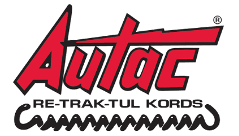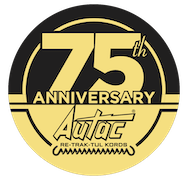In industrial and commercial settings, managing cables efficiently is essential for both safety and productivity. Power cable retractors are one of the most practical tools for keeping cables organized, reducing clutter, and preventing cable damage. From manufacturing facilities to automotive workshops, these retractors ensure that power cables remain in good condition while enhancing workplace efficiency.
What Are Power Cable Retractors?
A power cable retractor is a mechanical device designed to manage and store electrical cables safely by automatically retracting them after use. Think of it as a controlled system that winds the cable back into a reel or housing, keeping the workspace tidy and preventing potential hazards like tripping or cable wear.
Cable retractors are often used with equipment that requires mobility or where cables are frequently extended and retracted — such as cranes, electric vehicle chargers, robotic arms, and workstations in factories.
In simple terms, a power cable retractor ensures that electrical cables are only extended when needed and are neatly pulled back afterward, minimizing exposure to damage and tangling.
How Power Cable Retractors Work
Power cable retractors operate using either spring tension, motorized mechanisms, or gravity-based systems depending on their design and intended application.
1. Spring-Driven Retractors
The most common type uses a spring-loaded mechanism. As you pull the cable out, a tensioned spring inside the housing stores potential energy. When you release the cable, the stored energy automatically retracts it back into the reel.
-
Advantage: Simple, cost-effective, and low maintenance.
-
Limitation: Suitable for light to medium-duty applications.
2. Motorized Retractors
Motorized retractors use electric or hydraulic motors to retract the cable smoothly and automatically. These are ideal for heavy-duty environments where longer or thicker cables are used.
-
Advantage: Handles long and heavy cables effortlessly.
-
Limitation: Higher cost and requires a power source.
3. Gravity Retractors
These rely on gravity and counterweights to retract the cable. They are commonly used for vertical applications such as overhead crane systems.
-
Advantage: Simple operation, no external power or motor required.
-
Limitation: Limited to vertical cable management.
Main Components Of A Power Cable Retractor
A standard power cable retractor consists of the following components:
-
Housing / Enclosure: Protects the internal mechanism from dust and damage. Usually made of steel, aluminum, or heavy-duty plastic.
-
Reel Drum: The spool on which the cable winds and unwinds.
-
Spring or Motor Mechanism: Provides the retracting force.
-
Cable Guide or Stopper: Ensures smooth movement and prevents over-retraction.
-
Mounting Bracket: Allows the retractor to be attached to ceilings, walls, or mobile equipment.
-
Electrical Cable: Heavy-duty insulated cable rated for the required voltage and current.
Benefits Of Using Power Cable Retractors
1. Improved Safety
Loose power cables can cause tripping hazards and electrical accidents. Retractors keep cables neatly organized, reducing the risk of injury and improving overall workplace safety.
2. Extended Cable Lifespan
By preventing dragging, twisting, or crushing, retractors significantly extend the service life of expensive power cables, saving on replacement costs.
3. Enhanced Productivity
Workers don’t need to manually roll or untangle cables. The automatic retraction system saves time and ensures a clutter-free workspace, improving workflow efficiency.
4. Reduced Maintenance
Properly managed cables are less likely to suffer from insulation damage, exposure to oil, or mechanical stress — leading to lower maintenance and downtime.
5. Space Optimization
Cable retractors eliminate unnecessary clutter and free up valuable floor or wall space, especially in compact industrial environments.
6. Professional Appearance
Organized cable systems not only improve functionality but also reflect professionalism and compliance with safety standards.
Applications Of Power Cable Retractors
Power cable retractors are versatile and can be used across various industries and environments:
1. Manufacturing And Industrial Plants
Used in assembly lines, robotic systems, and movable tools where power cables need to be managed efficiently.
2. Automotive Workshops
Mechanics and technicians use retractors for power tools, inspection lights, and charging equipment.
3. Cranes And Material Handling Systems
Retractors ensure safe cable management for cranes, hoists, and conveyors, preventing cable snagging during operations.
4. Electric Vehicle (EV) Charging Stations
Cable retractors are increasingly used in EV chargers to manage heavy-duty charging cables neatly and safely.
5. Commercial And Retail Spaces
In areas where mobile kiosks or temporary displays require power, retractors provide easy and safe access to electricity.
6. Ports And Airports
Heavy machinery and mobile equipment rely on retractors to manage long power cables safely in dynamic environments.
Key Factors To Consider When Choosing A Power Cable Retractor
When selecting a power cable retractor, consider the following technical and environmental factors:
1. Cable Length And Weight
Choose a model designed for the length and thickness of your cable. Overloading the retractor can cause premature wear or failure.
2. Retraction Force
Ensure the spring or motor strength matches your application. Too little force may not retract fully, while excessive force can damage the cable.
3. Operating Environment
For harsh environments (dusty, wet, or chemical exposure), choose retractors with sealed housings and corrosion-resistant materials.
4. Mounting Configuration
Retractors can be wall-mounted, ceiling-mounted, or mobile. The choice depends on workspace layout and cable routing.
5. Electrical Rating
Verify the voltage and current ratings match your equipment’s requirements to ensure safety and compliance.
6. Maintenance Access
Opt for models that allow easy spring replacement or lubrication to minimize downtime.
Maintenance Tips for Power Cable Retractors
To maximize performance and lifespan:
-
Inspect cables regularly for wear or cuts.
-
Clean the housing to prevent dust buildup.
-
Lubricate moving parts as recommended by the manufacturer.
-
Check retraction tension periodically and adjust if necessary.
-
Avoid overextending the cable beyond its rated length.
Future Trends in Power Cable Retractors
With the rise of Industry 4.0 and smart manufacturing, modern cable retractors are becoming more advanced.
Some trends include:
-
Motorized smart retractors with sensors to detect cable tension and automate control.
-
Wireless monitoring systems for maintenance tracking.
-
Integration with robotics and IoT systems for predictive maintenance and safety alerts.
These innovations are transforming traditional cable management into intelligent, connected systems that improve efficiency and reliability.
Conclusion
Power cable retractors are essential components for efficient and safe cable management in any industrial or commercial setup. They not only prevent accidents but also increase the lifespan of cables and improve workplace organization. Whether you’re managing power cables for machinery, EV chargers, or factory tools, choosing the right retractor can make a significant difference in safety, productivity, and operational costs.
As industries continue to adopt automation and smart systems, investing in high-quality, durable, and efficient cable retractors is not just a convenience — it’s a smart long-term solution for modern power management.




Recent Comments